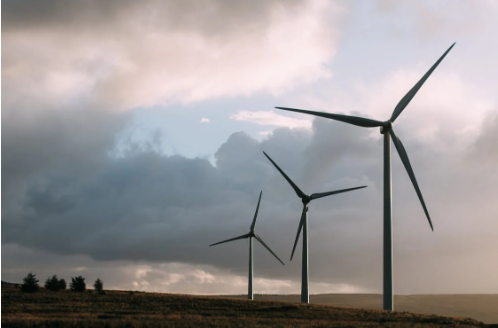Gas and steam turbines are used in power plants to generate electricity. Without them, the country will be in darkness. Steam turbines are more efficient than gas turbines and require less maintenance but the cost associated with them is more exorbitant. Combined cycle turbines use steam and gas turbines to produce electricity. This type of turbine requires less maintenance than a steam turbine but is more expensive than a gas turbine only because it needs better components that are considered to be a premium for this type of unit.
Importance Of Turbine Maintenance
As the world increasingly turns to renewable energy sources such as wind and solar, the importance of turbine maintenance cannot be understated. Not only does proper upkeep help keep turbines running smoothly and efficiently, but it also helps protect against potential safety hazards. Here are four key reasons why turbine maintenance is so important:
- Turbines help generate electricity from renewable sources, which is critical in helping to combat climate change.
- Proper turbine maintenance can prevent costly breakdowns and injuries.
- Ensuring that turbines are properly maintained can help reduce environmental impact.
- Proper maintenance can also improve the overall efficiency of a turbine plant.
What is gas turbine power?
Gas turbines are the most efficient and powerful type of engine, and they are used in airplanes, ships, and land vehicles to generate electricity. Gas turbines use pressurized air to turn a turbine that produces power. Gas turbine engines can be used to generate electricity at a high or low speed, which is why they are used in various applications.
Regular gas turbine maintenance is important because it keeps the engine running smoothly and efficiently. When the turbine fails, the entire engine can fail. Maintenance also helps prevent premature wear on the engine and parts, which can decrease performance and increase fuel costs.
In order to keep your gas turbine running smoothly, follow these tips:
1) Perform maintenance checks on a regular basis. Checking your engine regularly will help you detect any problems early and save you time and money.
2) Keep your engine cool by using proper cooling systems and procedures. Improper cooling can damage your engine.
3) Maintain your blades by cleaning them often and replacing worn or damaged parts as needed. Damaged blades can reduce your engine’s efficiency or cause it to fail prematurely.
Types of turbine power stations
Turbine power stations come in a variety of types, each with its own set of advantages and disadvantages. Here’s a look at the most common types:
- Steam turbines:
Steam turbines are the oldest type of turbine, and they use water as the working fluid. They’re very efficient, but they can be difficult to maintain. Steam turbines are used in power plants that generate electricity using steam from burning coal or natural gas.
- Gas turbines:
Gas turbines work similarly to steam turbines, but they use natural gas as the working fluid. They’re more efficient than steam turbines, but they also have some drawbacks. For one, they can be more expensive to build and operate. Gas turbines are used in power plants that generate electricity using gas from burning coal or natural gas.
- Electric motors:
Electric motors work differently than any of the other types of turbine power stations. An electric motor uses an electric current to turn a shaft, which powers a generator to produce electricity. Electric motors are used in most small-scale applications, such as aircraft and boats.
Steam and combined cycle turbines
The importance of turbine maintenance cannot be overstated. For decades, turbine manufacturers have preached the need for regular maintenance to keep turbines running smoothly and efficiently. In fact, a recent study found that maintaining turbines can result in significant savings for power producers.
Steam and combined cycle turbines are some of the most complex machines on the planet, so it’s no surprise that they require regular maintenance to keep them running smoothly. Here are a few tips to help you maintain your turbine:
- Inspect the blades regularly for wear and tear. This includes checking for sharp edges, nicks, and cracks. If there are any problems, take action to fix them as soon as possible.
- Check the lubrication system regularly for leaks and contamination. If there are any issues, take action to correct them as soon as possible.
- Check the fan blades for proper alignment and tightness. If there are any problems, take action to fix them as soon as possible.
- Inspect the stator windings for damage and malfunctions. If there are any issues, take action to correct them as soon as possible.
Gas turbine maintenance and steam turbine maintenance
If you operate a gas turbine or steam engine plant, it’s important to keep your machinery in good condition. Maintenance can help extend the life of your equipment and minimize downtime.
Turbine maintenance includes inspections and maintenance tasks such as lubrication, cleaning, and replacing parts. In order to prolong the life of your gas turbine or steam engine, it’s important to adhere to specific guidelines and procedures.
A gas turbine needs regular inspection for blade tip erosion, fouling, and other damage. Steam turbines require similar maintenance but also need proper sizing of valves, fittings, and bearings. In both cases, proper maintenance can help avoid costly failures down the road.
Conclusion
As a business owner, it is your responsibility to keep your turbine running at its best. This means ensuring that the equipment is properly maintained and that any necessary repairs are carried out as soon as possible. If you don’t take care of your turbine, you could be putting yourself at risk of losing revenue and damaging your reputation. Make sure to keep an eye on the maintenance schedule for your equipment and make sure to get in touch with us if there are any issues that need addressing. We want to help make sure that your turbine remains operational so that you can continue making money!















